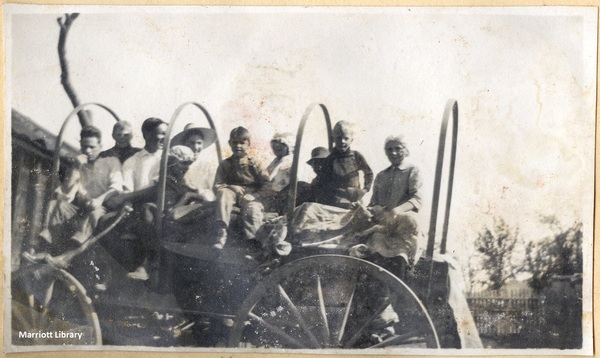Dublin Core
Title
Description
Inspired by the utopian visions of LDS prophet Joseph Smith, Utah settlements in the 1850s reorganized into an economic system called the "United Order," which prioritized communal living. One of the longest-lasting of these settlements was called Orderville, where residents shared land, labor, and goods for nearly twenty-five years. But after Utah connected to the nation through new railroads in the 1880s, outside products flowed at an unprecedented rate into formerly isolated communities. For the remote town of Orderville, it was a pair of pants that symbolized the growing influence of the outside world.
Orderville was governed by an elected Board of Management that tracked investments and daily affairs in the town. They oversaw shared cattle, a cotton farm, knitting, public works, cleaning, midwifery, stock feeding, and schools. Orderville townsfolk even ate together in a communal dining hall every night. But this strong economic and political system was put to the test after a young Orderville man traded communal wool for new pants at a store in Nephi. He then wore the pants to a town dance and received a kiss from a local girl. Such scandalous behavior demanded action and the town’s Board of Management ordered the young man to turn over his “store pants.”
Recognizing the popularity of these new fashions, the Board decided the pants would be used as a new pattern by the town's tailoring department. Clearly Orderville’s young people were growing tired of their simple gray woolen trousers because it was soon discovered that local boys were using the town’s grinding stone to intentionally wear out the seats of their pants in order to justify requesting a new pair. These rebellious youth forced the hand of Order elders who eventually started exchanging their locally-made wool for bolts of new cotton trade cloth.
While the “pants rebellion” did not bring down the United Order, it did illustrate the impact of external goods and the growing interest in the wider market place. United Order commodities were no longer produced by the insular town alone with shared labor. By 1885, the United Order in Orderville dissolved and an auction was held to re-privatize all its land.
Creator
Source
_______________
See Leonard J. Arrington, Great Basin Kingdom: An Economic History of the Latter-day Saints, 1830-1900 (Illinois University Press, 2004); Martha Sonntag Bradley, A History of Kane County (Utah Centennial County History Series, 1999).

